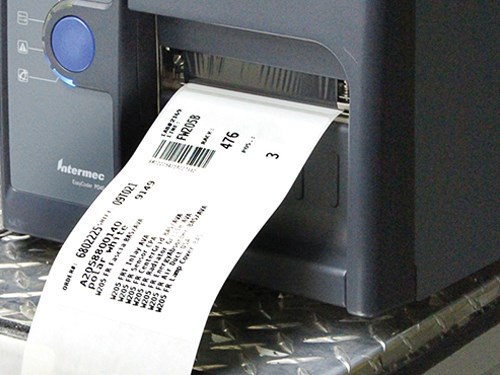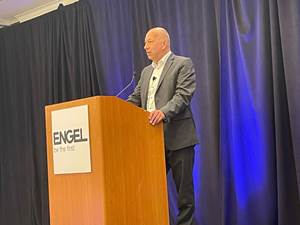RFID Boosts Production Efficiency For Bumper Molder
RFID technology significantly improves ‘error-proofing’ and productivity from molding to final fabrication.
RFID technology is allowing Rehau Automotive LLC in Cullman, Ala., to bolster efficiency in production of painted bumper systems for the 2015 Mercedes C-Class, being launched in North America this month. The same bumpers are currently being produced at Rehau’s German and South African facilities, both of which have also adopted the RFID technology.
“We wanted to standardize our process,” recalls Albert von Pelser-Berensberg, plant manager at the Cullman facility. “We installed the technology at this plant at the end of 2013, and by June it was fully being employed in production of bumpers for this program.” At the plant, bumpers for other Mercedes vehicles, such as the GL-class SUV, are also molded, and von Pelser-Berensberg aims to have the RFID technology running on that program by year’s end. By mid-2015, he expects Rehau to be using RFID technology in every one of its bumper programs.
“We injection mold the bumpers and apply a printed RFID label, which contains the semiconductor chip with all the electronic information, like the serial number,” he explains. “These labels are placed on the non-visible side of the bumper by a fully automatic label printer/applicator. The robot holds the bumper over the label applicator and the applicator ‘blows’ the label onto the part with pressurized air.”
Previously, labels with barcodes were applied by hand and checked only at the end of the process, as it would have been too time-consuming to do otherwise. An operator had to either hold the bumper over the scanner or the other way around. Von Pelser-Berensberg says there is now significantly better “error-proofing” and anticipates that it will result in significant scrap reduction.
A key advantage of RFI label application is that the bumper passes by RFID antennas that read the information at all downstream workstations. Von Pelser-Berensberg stresses the importance of traceability for purposes such as warranties, including information on when the product was made and assembled.
“More importantly, our assembly area benefits considerably,” he adds. “This is where you are faced with hundreds of options for the bumper, and it can be confusing. RFID antennas read the information on the label, each with a serial number based on the exact version of the bumper ordered by the customer.” Taking the Mercedes C-Class bumpers as one example, there are two completely different bumper styles—one for the standard C-Class and one for the AMG version. In addition, there are about 12 colors and various electronics, including parking sensors, radar sensors for blind spots, front-view cameras, LED daytime running lights, and headlamp washer units.
Rehau uses the RFID technology to track the various bumper systems it makes at its eight global facilities in order to both boost the efficiency of its processes—from injection molding to final fabrication—as well as to rapidly identify any problems related to a particular OEM’s orders. Rehau first employed the technology at its plant in Germany and entered into a contract in 2012 with German automatic-identification software firm noFilis AutoD GmbH. noFilis is providing Reheau with hardware and software, as well as integration and support.
Related Content
Plastic Compounding Market to Outpace Metal & Alloy Market Growth
Study shows the plastic compounding process is being used to boost electrical properties and UV resistance while custom compounding is increasingly being used to achieve high-performance in plastic-based goods.
Read MoreNew Technology Bonds Aluminum With Polyamides
With many benefits for numerous potential applications, including in the burgeoning electric vehicle market, Celanese’s Zytel Bonding Technology achieves stronger bonds than overmolding or welding.
Read MoreCelanese to ‘Shine’ at CES 2023 with Expanded Portfolio of Materials
With it acquisition of DuPont’s engineering resins, Celanese’s resin solutions for automotive electrification, e-mobility and consumer electronics are plentiful.
Read MoreGetting Charged Up About Electric Vehicles
Metal-to-plastics replacement stories are a classic of the genre for plastics publishing, and nowhere more so than in the automotive space.
Read MoreRead Next
Processor Turns to AI to Help Keep Machines Humming
At captive processor McConkey, a new generation of artificial intelligence models, highlighted by ChatGPT, is helping it wade through the shortage of skilled labor and keep its production lines churning out good parts.
Read MoreWhy (and What) You Need to Dry
Other than polyolefins, almost every other polymer exhibits some level of polarity and therefore can absorb a certain amount of moisture from the atmosphere. Here’s a look at some of these materials, and what needs to be done to dry them.
Read More


























